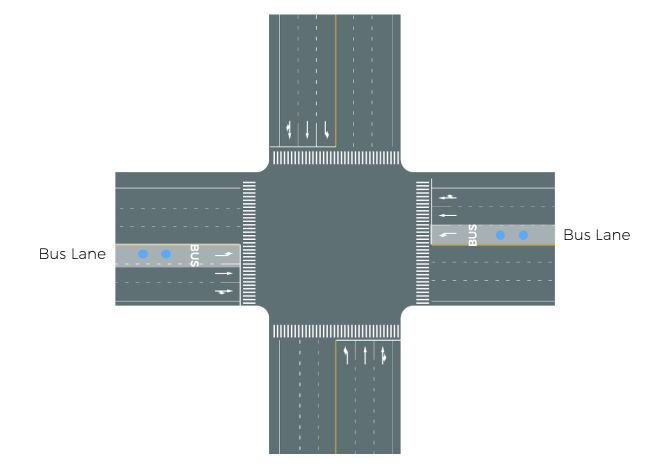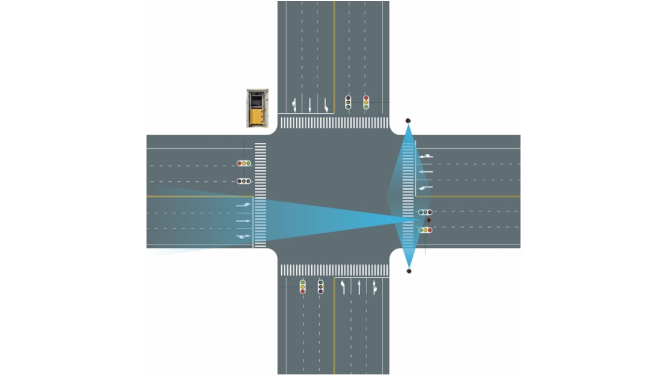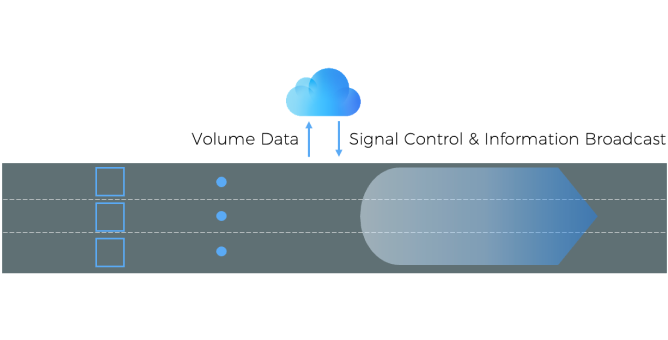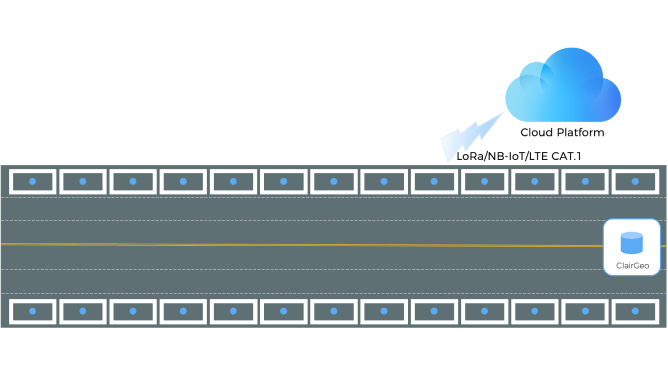Emergency vehicles preempt the right-of-way by interrupting the normal phase sequence of the signals along the route to allow for their safe and rapid passage. After a preset time period, the signal returns to normal operation. Transit vehicles receive priority treatment by extending the green signal phase or changing the signal to green as soon as possible to expedite movement of the vehicle along its route. Video detection provided an effective solution easy to implement.

Each dedicated bus lane is equipped with two magnetic sensors or two loops to provide information such as traffic flow, speed, and occupancy. Before a bus approaches an intersection, if the traffic light at the intersection is currently green, it will be timely extended to allow buses that have not yet reached the intersection to have sufficient time to pass through. This approach enhances the efficiency of bus transit, ensuring operational speed. Microwave radar will also be available for same application. And video detector will be able to identify the bus from its shape, so it will be more efficient while no dedicated bus lane is defined.

Detectors like video detectors and microwave radar detectors are deployed collecting the number of people in the waiting area, the comprehensive waiting time, the pedestrian walking speed in the crosswalk, and the traffic flow demand of road vehicles and the coordinated control demand of upstream and downstream. Signal controllers adopt such information and realize optimal control of non-contact automatic pedestrian traffic signals.

There are several vehicle classification counters commercially available. Many of these devices use loops and axle sensors to obtain the information required to classify vehicles. Many video image processors and presence-detecting microwave radar sensors can classify vehicles into three to five user-selected length bins.

Front-end data collection and real-time monitoring of parking space status by employing detection approach with highly sensitive magneto-resistive sensors, millimeter-wave radar, and photosensitive sensors to detect vehicle information. This parking management system can be deployed widely in roadside parking, residential area parking, highway service area, guidance for parking in large parking lots, and airport parking guidance.
